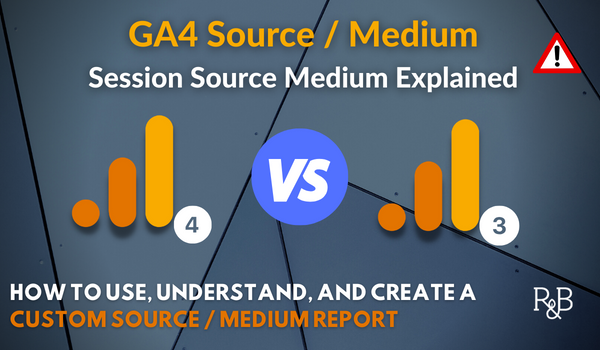Demystifying Secondary Dimensions in Google Analytics: Meaning and Practical Applications
Unveiling the Influence of Secondary Measurement in Google Analytics on Information Analysis and Insights
In the realm of information analytics, the utilization of second measurements within Google Analytics has emerged as a pivotal tool for drawing out deeper understandings and unraveling complex patterns that could otherwise continue to be obscured. By peeling back the layers of key data collections, secondary measurements offer a nuanced viewpoint that enriches the understanding of individual behavior, web site efficiency, and the effectiveness of advertising and marketing methods. However, truth influence and untapped potential of second measurements are commonly underestimated, eclipsed by the allure of main metrics. As we browse via the intricate landscape of data analysis, the value of secondary dimensions comes to be increasingly apparent, shedding light on important information that hold the trick to educated decision-making and tactical optimizations.
Checking Out the Concept of Additional Dimensions
Secondary measurements in Google Analytics provide extra understandings by enabling customers to examine key data in combination with an additional attribute. By integrating secondary measurements, users can dive much deeper into the data and reveal valuable relationships that might or else go undetected - what is a secondary dimension in google analytics.
Comprehending the principle of secondary dimensions is essential for taking full advantage of the possibility of Google Analytics. It allows individuals to segment data successfully, recognize patterns, and make notified choices based upon a more complete photo of their analytics information. By discovering the numerous secondary dimensions available in Google Analytics, individuals can unlock brand-new understandings and maximize their electronic advertising and marketing efforts. In essence, secondary measurements function as a powerful device for improving data evaluation and driving actionable outcomes.
Enhancing Information Interpretation With Additional Dimensions
Having developed the fundamental understanding of secondary measurements in Google Analytics and their crucial duty in information evaluation, the focus now moves towards leveraging these second characteristics to boost the interpretation of analytics data (what is a secondary dimension in google analytics). By integrating secondary dimensions right into data analysis, analysts can acquire much deeper understandings into customer habits, site performance, and advertising efficiency

In addition, additional measurements help in contextualizing main data metrics by providing additional layers of info. This contextualization aids in understanding the 'why' behind the information trends, aiding experts make notified optimizations and decisions to improve total efficiency. Inevitably, read the full info here integrating second dimensions enriches the data analysis process, resulting in even more tactical actions and purposeful insights.
Revealing Hidden Insights Through Additional Measurements
Discovering the depths of analytics information with secondary measurements exposes beneficial insights that would certainly or else stay obscured. By incorporating secondary measurements in Google Analytics, businesses can unearth hidden patterns, fads, and connections that provide an even more extensive understanding of customer habits and internet site efficiency. These additional layers of information click now permit experts to dive much deeper right into the main measurements, such as traffic resources or landing web pages, and acquire an extra nuanced viewpoint on exactly how different variables engage with each various other.
With the use of additional dimensions, experts can section and contrast information throughout different measurements, allowing them to identify specific factors that influence user involvement, conversion prices, and overall success metrics. By matching the primary measurement of 'gadget category' with the secondary measurement of 'age team,' online marketers can identify which age demographics choose accessing the web site with mobile tools versus desktop computers.
Leveraging Secondary Dimensions for Actionable Analytics
Building upon the understandings introduced with second dimensions in Google Analytics, services can currently harness this enriched data landscape to drive actionable analytics and strategic decision-making. By leveraging additional measurements, organizations can dig much deeper right into their data to extract beneficial patterns, fads, and relationships that might have formerly gone undetected. This much deeper level of evaluation allows organizations to acquire a much more thorough understanding of individual behavior, project performance, and general website efficiency.
One key benefit of making use of second dimensions for actionable analytics is the ability to segment information based upon details standards. This segmentation permits companies to customize their strategies and campaigns to various target market teams, causing extra targeted and efficient advertising initiatives - what is a secondary dimension in google analytics. Furthermore, second measurements give an even more alternative sight of user interactions, allowing businesses to maximize their internet site web content, style, and general customer experience
Taking Full Advantage Of Decision-Making With Secondary Dimensions
To enhance calculated decision-making in analytics, leveraging secondary measurements in Google Analytics can give a more nuanced viewpoint on individual behavior and project efficiency. By incorporating second measurements right into information analysis, companies can delve deeper right into the specifics of their internet site site visitors' communications and engagement patterns. This additional layer of information allows for a more thorough understanding of exactly how various variables, such as demographics, tools, or web traffic sources, influence essential efficiency indicators.

Final Thought
In verdict, making use of secondary measurements in Google Analytics plays an important duty in boosting data analysis and uncovering concealed insights. By discovering this idea, one can obtain a deeper understanding of user behavior and make notified choices based on workable analytics. Leveraging second dimensions permits for an extra extensive interpretation of information and optimizes the performance of decision-making processes.
